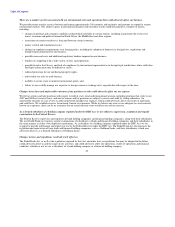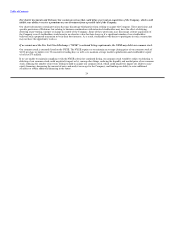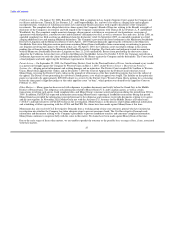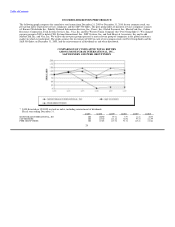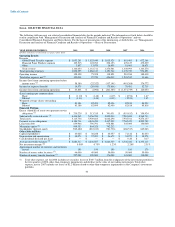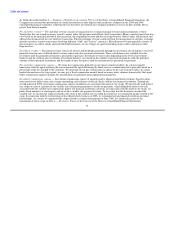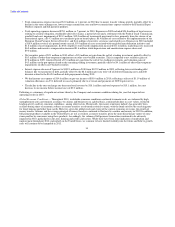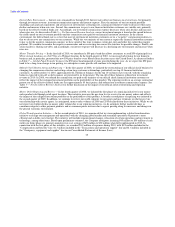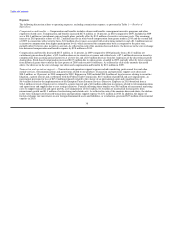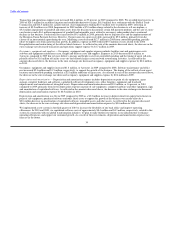MoneyGram 2010 Annual Report Download - page 35
Download and view the complete annual report
Please find page 35 of the 2010 MoneyGram annual report below. You can navigate through the pages in the report by either clicking on the pages listed below, or by using the keyword search tool below to find specific information within the annual report.
Table of Contents
As further described in Note 2 — Summary of Significant Accounting Policies of the Notes to Consolidated Financial Statements, the
Company has corrected the presentation of certain investments in time deposits and certificates of deposit in the 2009 and 2008
consolidated financial statements, reflecting the fact that these investments have original maturities in excess of three months but no
greater than thirteen months.
Fee and other revenue — Fee and other revenue consists of transaction fees, foreign exchange revenue and miscellaneous revenue.
Transaction fees are earned on money transfer, money order, bill payment and official check transactions. Money transfer transaction fees
vary based on the principal amount of the transaction, the originating location and the receiving location. Money order, bill payment and
official check transaction fees are fixed per transaction. Foreign exchange revenue is derived from the management of currency exchange
spreads on money transfer transactions involving different "send" and "receive" currencies. Miscellaneous revenue primarily consists of
processing fees on rebate checks and controlled disbursements, service charges on aged outstanding money orders and money order
dispenser fees.
Investment revenue — Investment revenue consists of interest and dividends generated through the investment of cash balances received
primarily from the sale of official checks, money orders and other payment instruments. These cash balances are available to us for
investment until the payment instrument is presented for payment. Investment revenue varies depending on the level of investment
balances and the yield on our investments. Investment balances vary based on the number of payment instruments sold, the principal
amount of those payment instruments and the length of time that passes until the instruments are presented for payment.
Fee and other commissions expense — We incur fee commissions primarily on our money transfer products. In a money transfer
transaction, both the agent initiating the transaction and the agent disbursing the funds receive a commission that is generally based on a
percentage of the fee charged to the consumer. We generally do not pay commissions to agents on the sale of money orders. In certain
limited circumstances for large agents, we may pay a fixed commission amount based on money order volumes transacted by that agent.
Other commissions expense includes the amortization of capitalized agent signing bonus payments.
Investment commissions expense — Investment commissions consist of amounts paid to financial institution customers based on short-
term interest rate indices times the average outstanding cash balances of official checks sold by that financial institution. Through the
second quarter of 2008, investment commissions expense included costs associated with interest rate swaps. We historically used interest
rate swaps to convert a portion of our variable rate commission payments to fixed rate payments, which hedged the interest rate risk
associated with the variable rate commissions paid to our financial institution customers. In connection with the interest rate swaps, we
paid a fixed amount to a counterparty and received a variable rate payment in return. To the extent that the fixed rate exceeded the
variable rate, we incurred an expense related to the swap; if the variable rate exceeded the fixed rate, we recognized income related to the
swap. In connection with the restructuring of the official check business in 2008, we terminated certain financial institution customer
relationships. As a result, we terminated the swaps related to commission payments in June 2008. See further discussion of the
termination of these swaps in Note 6 — Derivative Financial Instruments of the Notes to Consolidated Financial Statements.
32


